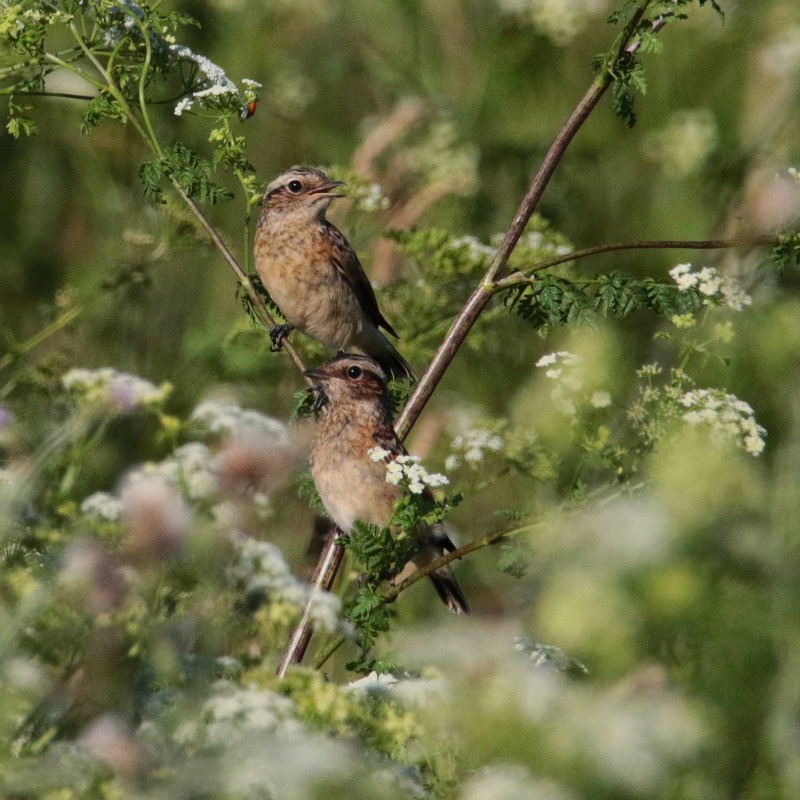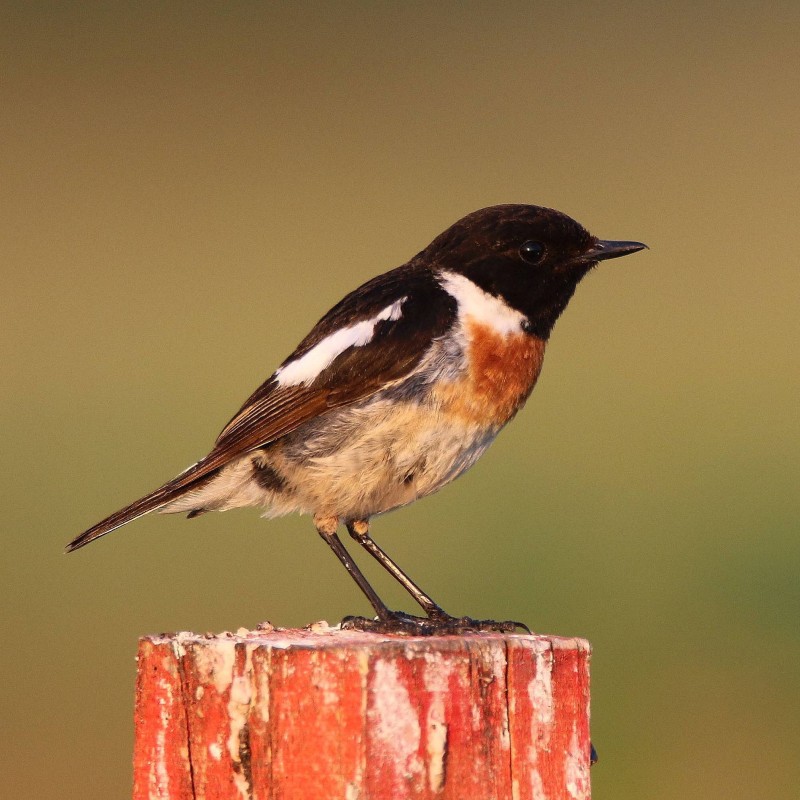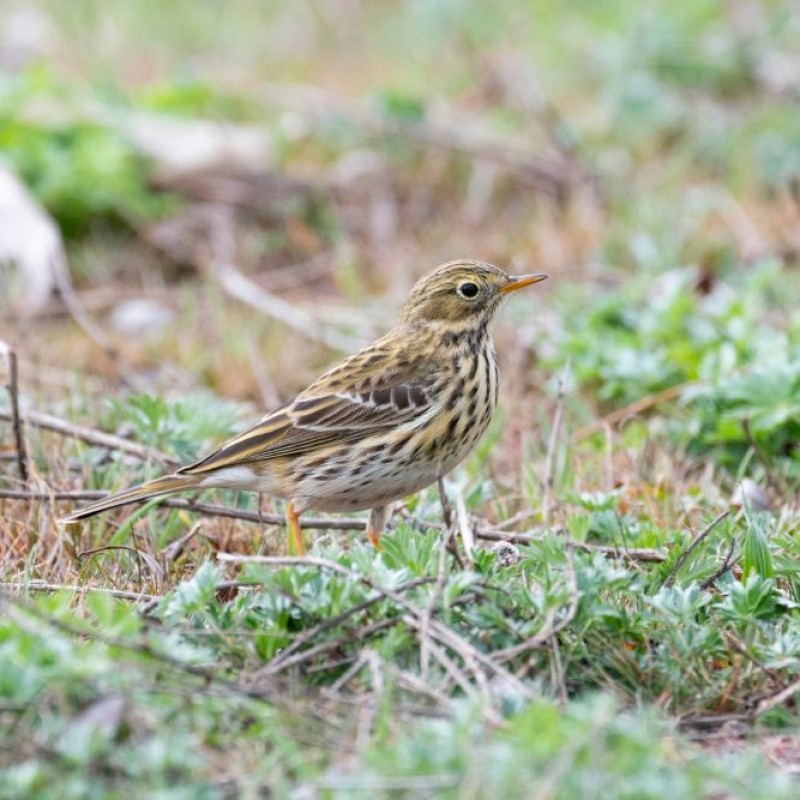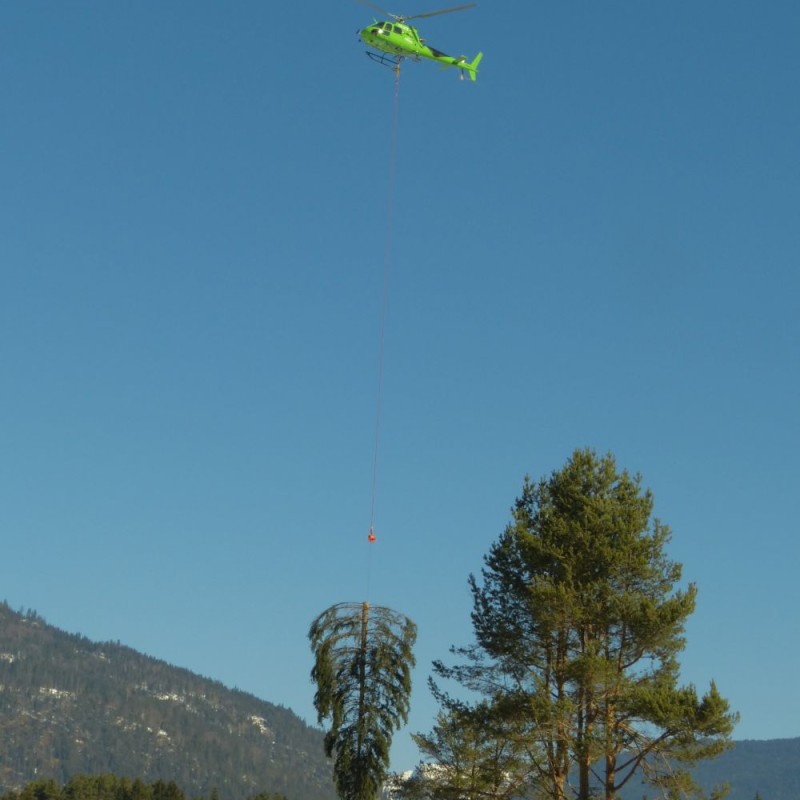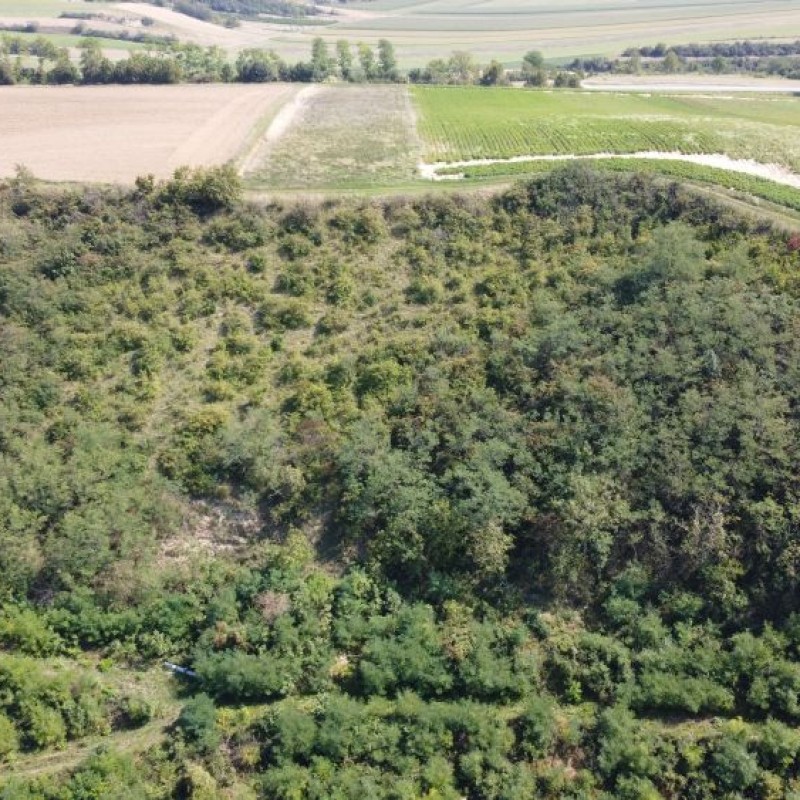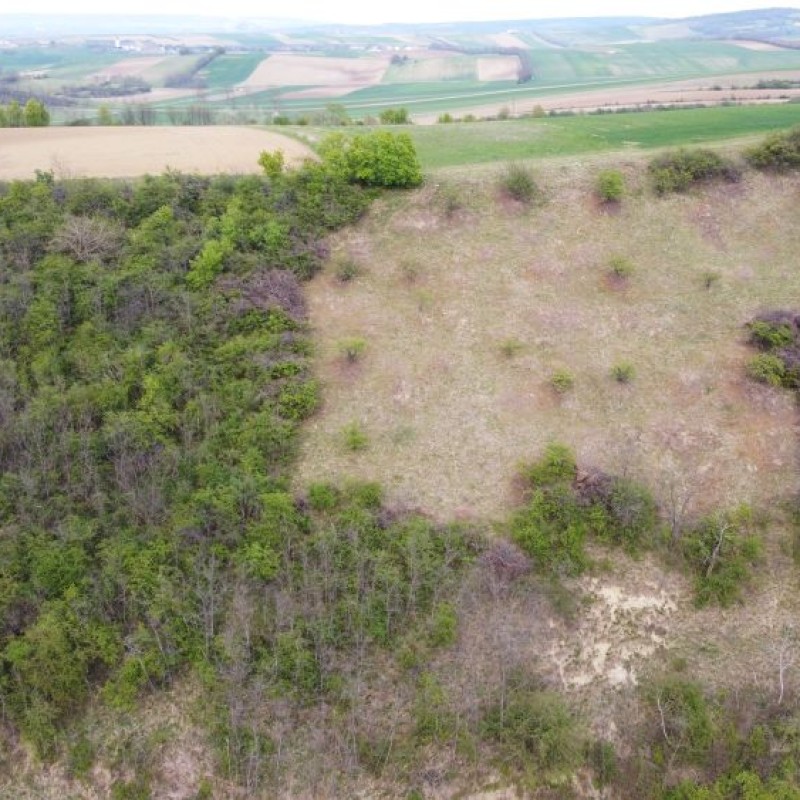NHM Vienna and BirdLife Austria are successfully joining forces for biodiversity
15. December 2022
When insects disappear, birds run out of food. In order to counteract this alarming scenario, the NHM Vienna and BirdLife
Austria have devised a work package in the context of the biodiversity initiative “VielfaltLeben”, run by the Climate Ministry
(BMK) to improve habitats for endangered bird species in five Austrian provinces. The initiative received financial support
from the Ministry of Agriculture (BML) and the European Union.
Managing
meadows to protect endangered birds and grasshoppers
Securing the wealth of insects as an essential food source for many native bird species is an important objective of the “VielfaltLeben” initiative. This can be done, for example, by clearing meadows overgrown by shrubs, which is equally important for insects and birds. With the consent of the landowners and with the help of partners from agriculture, the initiative cleared shrubs, felled trees and mowed reeds in order to restore open, extensively used meadows. In one case, the initiative even employed a helicopter to remove the cleared wood so as not to damage the valuable ground. The projects focused on a dry grassland area in the Weinviertel (Oberschoderlee), a wet meadow area in Tyrol (Ehrwalder Becken), and bog meadows in Hörfeld on the border between Styria and Carinthia and in the Ibmer Moor in Upper Austria. Partly involving a great deal of effort, the measures were specifically aimed at protecting stonechat, whinchat and meadow pipit, as all of these bird species are endangered in Austria and are only found to breed in some regions. As grasshoppers are important bird feed, the initiative specifically surveyed their population density in the selected meadows in order to ensure that the meadow management was as targeted as possible.
“Success was achieved quickly on the Blauer Berg in Oberschoderlee, where the rare woodlark has now settled on one of the dry meadows we tended,” Dr Remo Probst, project manager at BirdLife Austria, is happy to report.
From feast to famine? - Special exhibition at the NHM Vienna
In order to explain the importance of insect mortality and the decline in bird populations, the NHM Vienna has set up a special exhibition entitled From feast to famine? in the bird rooms (halls 29, 30, 32). The exhibition showcases insectivorous bird species and their habitats and the fatal consequences of the disappearance of insects that these birds feed on. “The fact that some insectivores, such as the lesser kestrel and the woodchat shrike, become extinct in Austria is sad evidence of the consequences of intensive land cultivation and the associated loss of insects on our doorstep,” says Dr Swen Renner, head of the bird collection at the NHM Vienna.
As a special feature, the exhibition displays original “menu cards” for the different bird groups. Unfortunately, many of the items on the menu have to be marked “no longer available”. There is also an audio/video installation to audibly demonstrate the loss of insect and bird diversity: the installation shows near-natural habitats rich in species and, in contrast, places that human action has made “monotonous”. The contrasting soundscapes of these places can be heard in the exhibition. “If the chirping and buzzing of insects and bird songs disappear, our surroundings also become a lot more ‘monotonous’ in terms of sound,” says Mag. Melanie Pilat, one of the main designers of the special exhibition.
This project shows that we do not have to stand by and watch nature become more and more diminished. With their initiative, the NHM Vienna and Birdlife Austria show that the situation can be improved. In gardens, on public green spaces, in agriculture and forestry, we can make minor and major contributions to ensuring that insects will continue to buzz and hum and that the concert of bird songs will not fall silent.
The special exhibition at the NHM Vienna:
https://www.nhm-wien.ac.at/vielfalt_leben_V
Securing the wealth of insects as an essential food source for many native bird species is an important objective of the “VielfaltLeben” initiative. This can be done, for example, by clearing meadows overgrown by shrubs, which is equally important for insects and birds. With the consent of the landowners and with the help of partners from agriculture, the initiative cleared shrubs, felled trees and mowed reeds in order to restore open, extensively used meadows. In one case, the initiative even employed a helicopter to remove the cleared wood so as not to damage the valuable ground. The projects focused on a dry grassland area in the Weinviertel (Oberschoderlee), a wet meadow area in Tyrol (Ehrwalder Becken), and bog meadows in Hörfeld on the border between Styria and Carinthia and in the Ibmer Moor in Upper Austria. Partly involving a great deal of effort, the measures were specifically aimed at protecting stonechat, whinchat and meadow pipit, as all of these bird species are endangered in Austria and are only found to breed in some regions. As grasshoppers are important bird feed, the initiative specifically surveyed their population density in the selected meadows in order to ensure that the meadow management was as targeted as possible.
“Success was achieved quickly on the Blauer Berg in Oberschoderlee, where the rare woodlark has now settled on one of the dry meadows we tended,” Dr Remo Probst, project manager at BirdLife Austria, is happy to report.
From feast to famine? - Special exhibition at the NHM Vienna
In order to explain the importance of insect mortality and the decline in bird populations, the NHM Vienna has set up a special exhibition entitled From feast to famine? in the bird rooms (halls 29, 30, 32). The exhibition showcases insectivorous bird species and their habitats and the fatal consequences of the disappearance of insects that these birds feed on. “The fact that some insectivores, such as the lesser kestrel and the woodchat shrike, become extinct in Austria is sad evidence of the consequences of intensive land cultivation and the associated loss of insects on our doorstep,” says Dr Swen Renner, head of the bird collection at the NHM Vienna.
As a special feature, the exhibition displays original “menu cards” for the different bird groups. Unfortunately, many of the items on the menu have to be marked “no longer available”. There is also an audio/video installation to audibly demonstrate the loss of insect and bird diversity: the installation shows near-natural habitats rich in species and, in contrast, places that human action has made “monotonous”. The contrasting soundscapes of these places can be heard in the exhibition. “If the chirping and buzzing of insects and bird songs disappear, our surroundings also become a lot more ‘monotonous’ in terms of sound,” says Mag. Melanie Pilat, one of the main designers of the special exhibition.
This project shows that we do not have to stand by and watch nature become more and more diminished. With their initiative, the NHM Vienna and Birdlife Austria show that the situation can be improved. In gardens, on public green spaces, in agriculture and forestry, we can make minor and major contributions to ensuring that insects will continue to buzz and hum and that the concert of bird songs will not fall silent.
The special exhibition at the NHM Vienna:
https://www.nhm-wien.ac.at/vielfalt_leben_V

